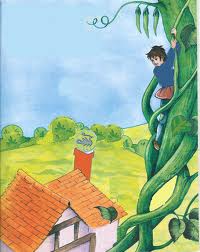 A lot of us in the Northeast are doing our share of grumbling this year about the Arctic air that just won’t go away. Usually March is the time when the winds start to blow, the sap starts to rise, the snow melts into the thawing earth and our thoughts turn to snowdrops and crocus.
A lot of us in the Northeast are doing our share of grumbling this year about the Arctic air that just won’t go away. Usually March is the time when the winds start to blow, the sap starts to rise, the snow melts into the thawing earth and our thoughts turn to snowdrops and crocus.
This year, we’re still in the deep freeze with a hardpack of snow on the ground, and no end in sight.
It’s all part of the erratic weather of our climate change era. The question for all of us now is, how, beyond bitching and moaning, are we going to respond?
Most of us just shrug and turn the dial on the heater up a little higher, not thinking about what that very small, ordinary act really entails.
If your thermostat is wired into an oil burner or a natural gas furnace, like most homes and apartment buildings in the Northeast, then when you turn up the dial in response to the bitter cold you are, perhaps unwittingly, enabling, supporting and becoming an integral part of the very industry that is relentlessly destroying our climate.
The fossil fuel industry is not some demonic force outside of our control. It’s just a human business that is responding to human needs for energy—lots and lots of energy.
We Americans are used to getting what we want, and what we’ve wanted, in the 50 years I’ve been on the planet, is ease. What could be easier than turning a dial to make your house warmer in the winter or cooler in the summer, or gassing up your comfy car before you get on the freeway?
 Likewise in terms of agricultural production—we like to get our vegetables pre-washed and sometimes even pre-cut, all even-sized, no blemishes, laid out attractively in faux crates under spotlights in our upscale grocery stores.
Likewise in terms of agricultural production—we like to get our vegetables pre-washed and sometimes even pre-cut, all even-sized, no blemishes, laid out attractively in faux crates under spotlights in our upscale grocery stores.
When we buy that bag of potatoes or carrots, we’re not thinking about the tons of pesticide, herbicide, fungicide and fossil fuels that went into making it easy for us to throw these items in our shopping cart.
We’re not thinking about the bees, butterflies and other valuable insects that have been driven to population collapse by industrial agricultural practices; or the huge dead zones in the ocean at the mouth of the Mississippi River, where fertilizer and chemical run-off from the Midwest runs down to the sea; or the millions of birds that are affected each year by the toxic chemicals we spread over the landscape.
We’re just throwing that bag of veggies into the cart, or turning up that dial.
Well, the time of such oblivious innocence is over.
The curtain has been pulled back, and the Wizard of Industrial Capitalism has been revealed—and lo and behold, he wears the ordinary face of each one of us.
Every step we take on this beautiful, battered planet of ours matters.
I am heartened to know that this very weekend, one year after the big climate change rally in Washington DC that I attended in the hopes of pressuring the Obama Administration to block the Keystone XL pipeline, thousands of activists, most of them college students, will be raising a ruckus at the White House gates to insist that the politicians stop gambling away their future.
Here in my backyard, in the Massachusetts-New York region, people have woken up to the fact that mile-long trains of crude oil and gas are being run through heavily populated neighborhoods.
We’re moving to block gas fracking in western Massachusetts as the sight of contaminated tap water in fracking regions brings the dangers right home.
We’re also starting to get serious about making solar energy accessible to homeowners and businesses.
 This week’s New Yorker magazine has a fascinating article about a little-known scientific program to create a controlled thermonuclear fusion power plant. Unlike the current fission plants, which burn radioactive fuel and generate dangerous waste, the fusion plant, if it were successful, would run indefinitely on seawater and lithium, with no waste. It would be ten times hotter than the core of the Sun.
This week’s New Yorker magazine has a fascinating article about a little-known scientific program to create a controlled thermonuclear fusion power plant. Unlike the current fission plants, which burn radioactive fuel and generate dangerous waste, the fusion plant, if it were successful, would run indefinitely on seawater and lithium, with no waste. It would be ten times hotter than the core of the Sun.
Talk about an audacious plan! You have to hand it to human beings, we are nothing if not hubristic. It is our greatest strength and our most glaring weakness.
Why spend billions on creating an artificial sun here on earth? Why not just learn from our cousins the plants, and start to use the sunlight we have more efficiently?
It’s time to take off our grimy 20th century glasses and start looking at the world and ourselves through 21st century eyes. When we do, we’re going to find that the solutions to all the problems that beset us have been hidden in plain sight all along.













